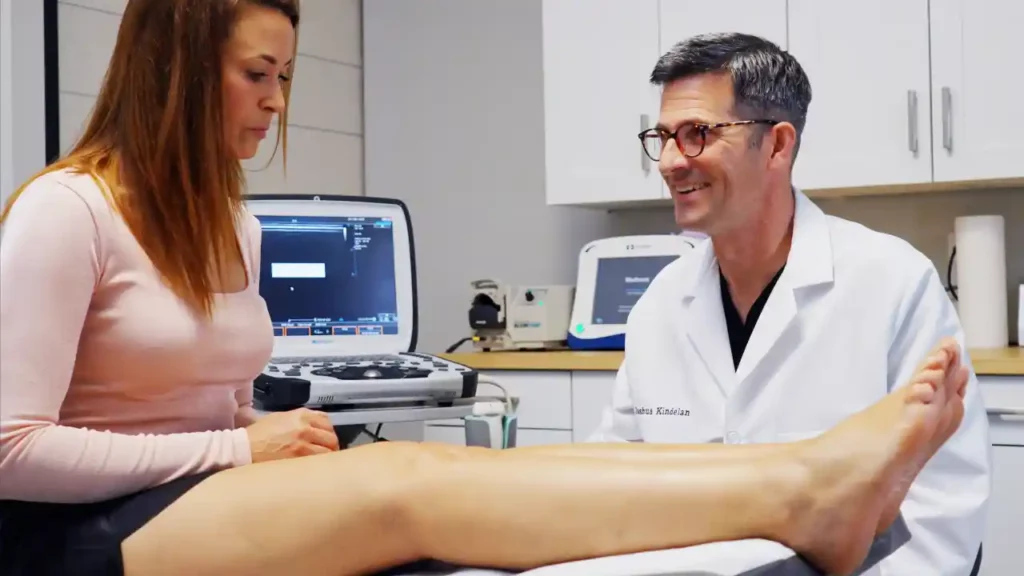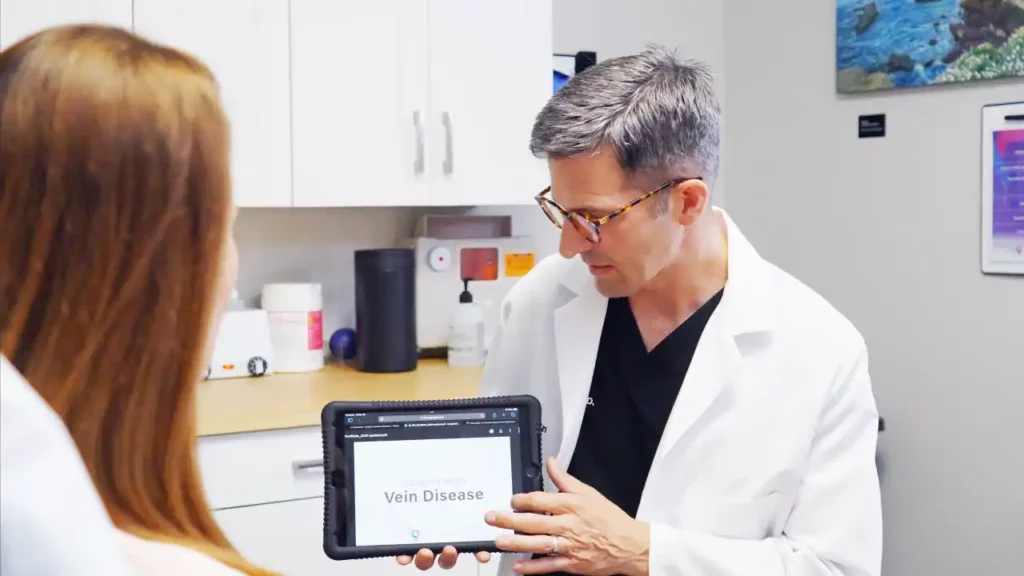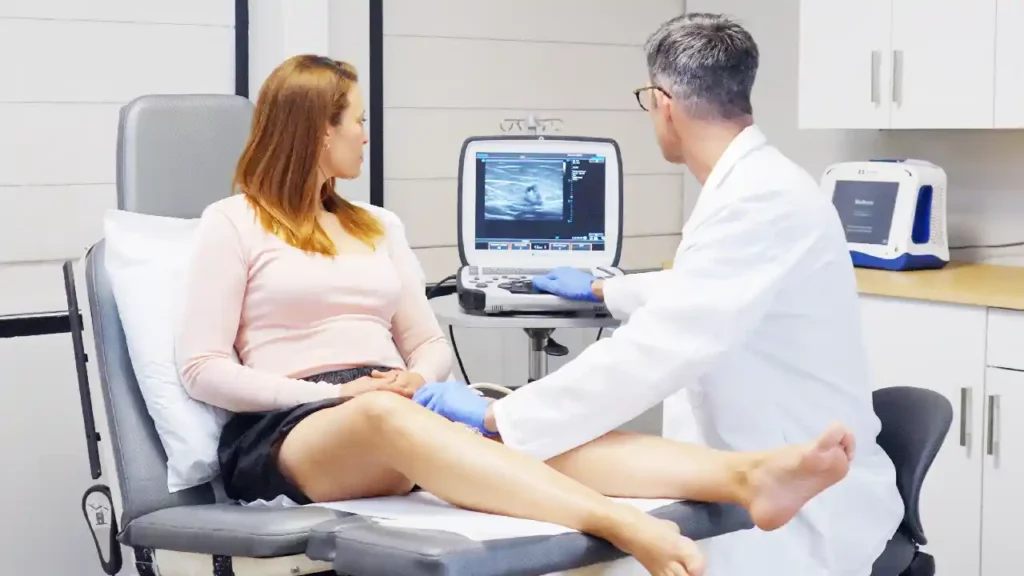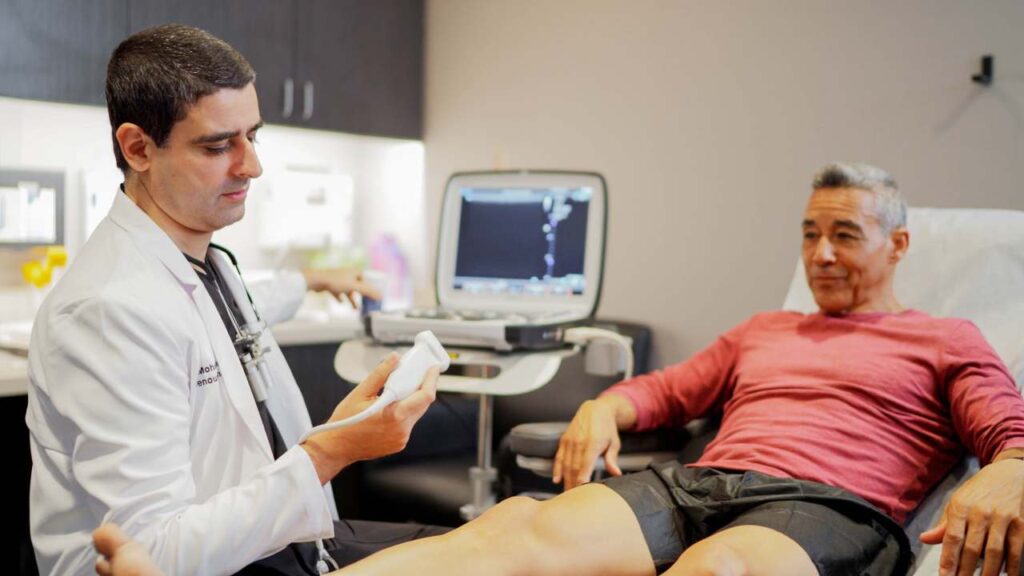Varicose vein treatments can be performed by doctors arising from all medical specialties, including anesthesiologists, cardiologists, podiatrists, dermatologists, and others. However, they should have specialized and advanced training in the diagnosis and treatment of vein problems. You should ideally go through their educational background to ensure they have specialized training for varicose vein treatments.
Do Dermatologists Treat Varicose Veins?
Yes, dermatologists also treat varicose veins and spider veins. However, since dermatologists are skin specialists, they focus more on cosmetic relief rather than medical treatments. Most dermatologists and medical spas provide sclerotherapy or laser therapy for vein problems. Sclerotherapy is one of the best treatments for spider veins, and laser therapy is one of the most popular non-invasive vein treatments.
However, sclerotherapy and laser therapy can only provide cosmetic relief from spider veins, i.e., the dense clusters of blood vessels visible on the skin’s surface. These procedures don’t treat chronic venous insufficiency, the underlying circulatory disorder responsible for all your vein problems, including spider veins and varicose veins. Treating spider veins without addressing the underlying vein disease leads to an inevitable relapse.
That’s why you should only consult dermatologists for varicose veins if they have specialized training in minimally invasive vein treatments. They should also perform vascular imaging tests before your treatment to identify and stop vein disease.
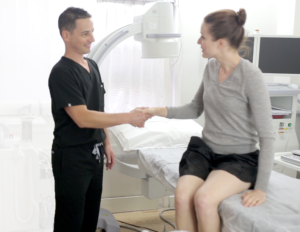
What is a Vein Specialist Called?
The official terminology for a vein specialist is a phlebologist. That’s because phlebology is the branch of medicine that deals with vascular health.
You can find some of the best board-certified and fellowship-trained vein specialists in California in our state-of-the-art vein centers. Our vein centers in San Diego and San Jose are led by phlebologists with specialized training in the latest minimally invasive spider vein and varicose vein treatments. Furthermore, our vein doctors always diagnose the root cause of your vein problems using ultrasound diagnostic tests before curating a treatment plan. This ensures optimal and long-lasting results without harsh complications or downtime.
When Should I see a Doctor About Varicose Veins?
If you have varicose veins, you should see a vein doctor immediately. Varicose veins are dense blood vessels that protrude out of the skin’s surface, looking like a mass of tangled, twisted, and knotted ropes. Some have also described them as dense tree trunks bulging out of the skin’s surface. They might be blue, purple, red, green, or skin-colored, and they’re usually seen on the lower extremities of the body, such as the legs and thighs.
Varicose veins are essentially dilated blood vessels with excessively accumulated blood. They contain so much blood that their vein walls are dilated. Continued dilation would weaken the vein walls and increase the risk of your veins bursting, which could cause profuse bleeding, for which you’ll have to be taken to an emergency room. As such, if you seek large varicose veins popping out on your legs, you probably have advanced venous insufficiency and need immediate treatment.
However, the presence of varicose veins shows that you’ve probably had vein disease for a long time — it takes time for enough blood to accumulate in your leg veins to cause varicose veins. You should ideally identify the earliest signs and symptoms of vein disease to seek prompt treatment at the earliest stages. The warning signs of vein disease include leg heaviness, frequent leg cramps, restless leg syndrome, leg swelling, leg pain, skin discoloration, and spider veins.

Can you get rid of Varicose Veins Without Surgery?
Yes, you can get rid of varicose veins without surgery. In fact, surgical treatments for varicose veins are now considered outdated and obsolete, replaced by minimally-invasive alternatives. In the past, varicose veins and vein disease could only be treated with surgeries, such as vein ligation, vein stripping, and venous bypass surgery. These procedures have a high risk of complications, and they involve extended downtime or hospitalization.
These days, the best varicose vein treatments are non-surgical and minimally invasive, such as radiofrequency ablation, endovenous laser ablation, clarivein, and venaseal. These minimally invasive procedures are performed under local anesthesia, and they usually involve nothing more invasive than an injection or a small incision. Furthermore, there’s no post-treatment downtime, and you can resume your daily activities immediately.
As such, minimally invasive varicose vein treatments are preferable to vascular surgeries.
What is the Best Treatment for Varicose Veins?
There’s no such thing as the best treatment for varicose veins. Your vein doctor in California may treat varicose veins using a wide range of minimally invasive procedures, such as radiofrequency ablation, endovenous laser ablation, clarivein, venaseal, and ambulatory phlebectomy.
Each vein treatment is extremely safe and effective, but your vein doctor will have their reasons to favor one over the other. It might have something to do with your diagnosis, the condition or size of your leg veins, the location of your varicose veins, your medical history, or other factors.
The following are some of the possible varicose vein treatments:
- Radiofrequency ablation treats vein disease using thermal energy.
- Endovenous laser ablation treats vein disease using laser energy.
- ClariVein treats vein disease using sclerosant medicine and mechanical pressure.
- VenaSeal treats vein disease using a medical-grade adhesive.
- Ambulatory phlebectomy removes varicose veins through small incisions on the skin.

What Happens if you Don’t Treat Varicose Veins?
If left untreated, chronic venous insufficiency continues spreading, and your varicose veins continue growing larger due to blood accumulation. Over time, you may experience advanced complications of vein disease, such as skin discoloration, skin disease, leg ulcers (non-healing wounds), and deep vein thrombosis (blood clots in your veins). That’s why you must contact a reliable vein treatment center in California for prompt diagnosis and treatment.
